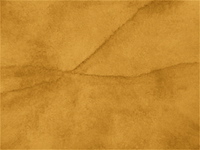Dear friends, I found this information very informative in the web... I want to share it with you today, hope you like it like I did.
∞∞∞∞∞∞∞∞∞∞∞∞∞∞∞∞∞∞∞∞∞∞∞∞∞∞∞∞∞∞
The Old World Parchment is the most requested faux finish there is. It's common to see pictures of walls faux painted with this technique in decorator magazines. Walls are supposed to look like aged, distressed plaster found in old stone buildings in the Mediterranean. Another common term for this finish is
Tuscany. Although one might think that you need to have very rustic decor in order to incorporate this look on walls, many have faux painted the Old World Parchment in rooms with contemporary furniture, too.How to achieve this faux finish
Since the goal of this technique is to make the walls look old and worn, you can get an authentic look by creating different shapes of dark and light tones of paint. We don't want a conformed pattern as then we would tend to get a look like wall paper. There are a few different ways to manipulate our glaze on the walls. The most common method is to use a cheese cloth to rub the glaze on the wall. Another way is to use a brush and apply a cross hatch pattern all over. You can also use paint rollers to apply the glazes to the wall and then remove some of the glaze in order to let some of the base coat to show thru. Then using a hake brush, you soften the patterns made.
Why to hire a professional?
As you can imagine the methods mentioned above are time consuming. In addition, you can't really control where your light and dark shapes will be. If you want to use more than one color, you must wait till the first layer is dry before applying another or you have to apply each color with a brush in different spots then blend together. If your walls are high, you must carry multiple trays up a ladder to do this which is not only cumbersome but dangerous. You should be using a scaffold but lets face it, scaffolding might not be an option.What colors are best to use?

The most popular colors used with this faux finish are earth tones. Golds and browns are the most common. The main color is Florentine Brass. For the second color, you can use Turkish Coffee or our MFP1003 Black Brown which is a color we made just for our company. We recommend an off white base coat. If you want a lighter touch, then you can opt to use just the Florentine Brass or just load one section of Turkish Coffee or Black Brown to the palette instead of two sections.
What type of base coat sheen is best?
Your base coat should be a satin sheen. Eggshell is another sheen that can be used, but the method for applying the glaze on the wall is different than when you are using a satin base coat. The reason is because the glaze tends to dry faster with eggshell. Take time to watch the videos below to see the difference.
************************************************************************************
FREE ESTIMATES
 The most popular colors used with this faux finish are earth tones. Golds and browns are the most common. The main color is Florentine Brass. For the second color, you can use Turkish Coffee or our MFP1003 Black Brown which is a color we made just for our company. We recommend an off white base coat. If you want a lighter touch, then you can opt to use just the Florentine Brass or just load one section of Turkish Coffee or Black Brown to the palette instead of two sections.
The most popular colors used with this faux finish are earth tones. Golds and browns are the most common. The main color is Florentine Brass. For the second color, you can use Turkish Coffee or our MFP1003 Black Brown which is a color we made just for our company. We recommend an off white base coat. If you want a lighter touch, then you can opt to use just the Florentine Brass or just load one section of Turkish Coffee or Black Brown to the palette instead of two sections.